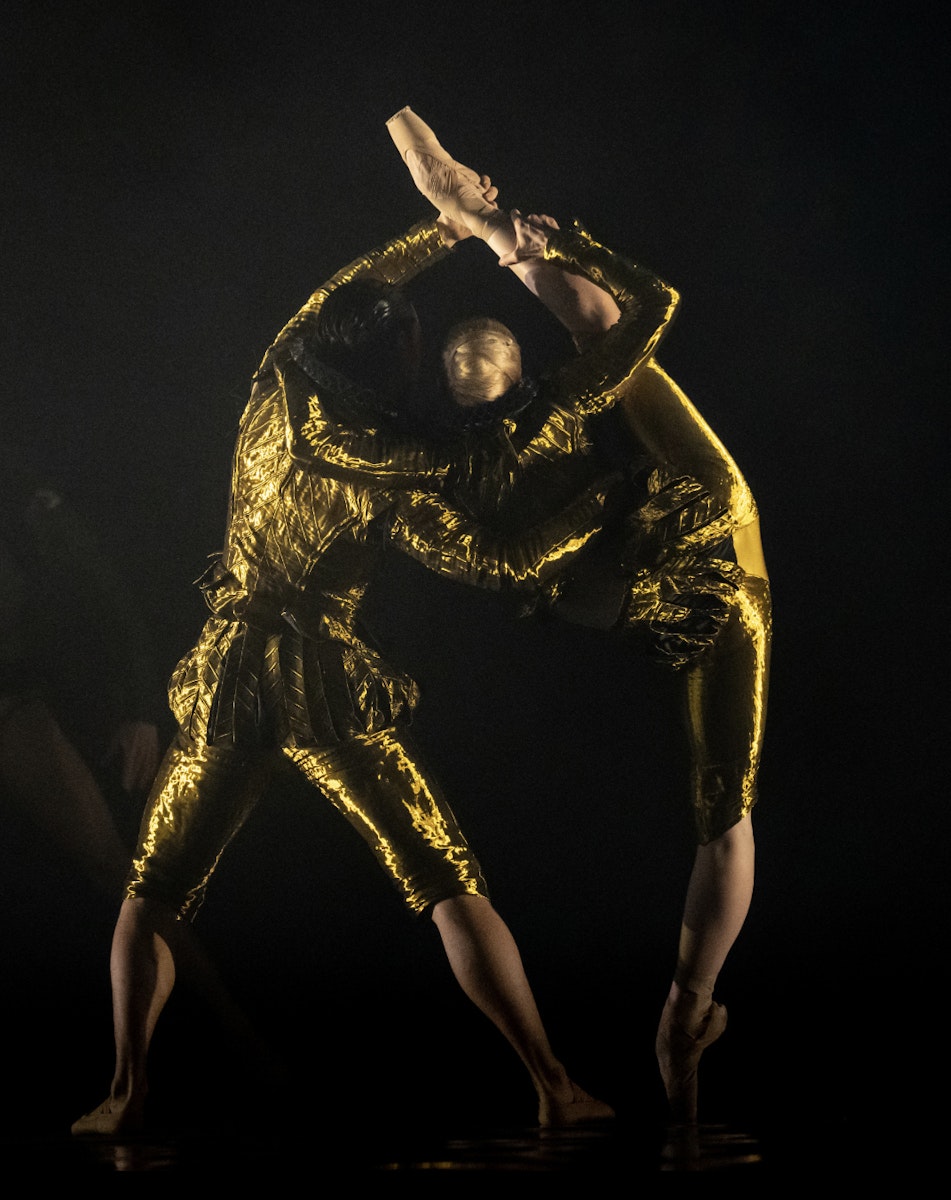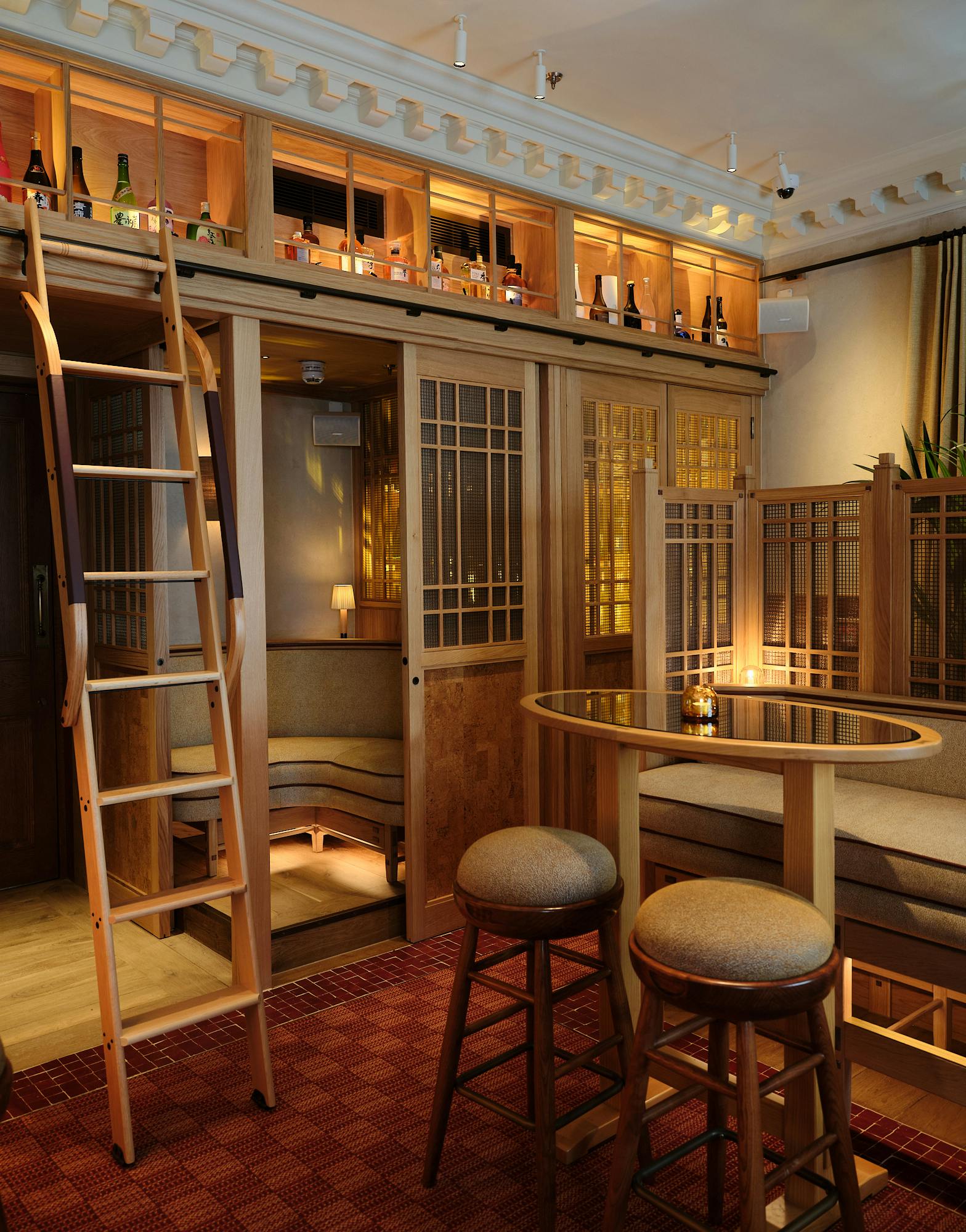
Words by SODA team
20 Oct 2025
Ilaria Martello on the Power of Process in Costume Design
At the Royal Ballet & Opera, Senior Costume Production Manager Ilaria Martello sees creativity not as a single act but as a choreography of collaboration, material dialogue, and unseen craft. From the chalk-dusted world of The Dante Project to the liquid architectures of Deepstaria, Martello’s story is one of patience, resilience, and the conviction that process itself is where meaning resides.

Photo by Carol Lancelloti
In this interview we look at some of the principles underpinning Martello’s work.
Beginnings: the accident of arrival
Born and raised outside Milan, Martello grew up far from the worlds of theatre and dance. “I literally didn’t know anything about ballet,” she admits. “I went once with my primary school. For me, it was a whole new world. Maybe unconsciously that’s what I was waiting for, something that gave me extreme pleasure and really made sense of who I was.”
Martello’s path to the Royal Ballet & Opera in London was far from direct. She studied English and German literature before pursuing textiles at Goldsmiths, later taking a placement with Vivienne Westwood. A friend then encouraged her to apply for a buyer role at the Royal Ballet & Opera.“I wasn’t sure what she saw in me,” Martello says, “but I got the job, and I’ve been in the same department ever since, in different roles, for 22 years.”
From that accident of arrival, Martello has forged a career working with some of the great and the good of contemporary performance. Yet her role is not one of celebrity or spotlight but of orchestration, a behind-the-scenes choreography that keeps productions moving.
For Martello, no two weeks ever look the same. “There isn’t a typical week, in a way,” she explains. Her current role is less about sketching and stitching and more about managing the team of costume production managers, complex planning stretched years in advance, continuously developing strategies for working more sustainably, as well as mentoring a younger generation of designers and creative practitioners. Alongside this sits a constant cycle of fabric research, costume fittings, budget management, and liaising with in-house and freelance makers.
“What I love is that it’s very collaborative and non-hierarchical,” she adds. “You just distribute the work in the most efficient way. One day you’re deep in spreadsheets, the next you’re running between multiple costume fittings.”
Conception: where ideas breathe

Calvin Richardson in Wayne McGregor's The Dante Project. ©2023 Royal Ballet & Opera, photographed by Andrej Uspenski
The story of a costume rarely begins with a sketch. For Ilaria Martello, it often begins with a question: which materials can help unfold the designer’s vision?
“When I first receive a designer’s drawing, I don’t see a finished object,” she says. “I see an invitation, something that will be shaped by hands, materials, and movement.”
That philosophy was perhaps tested most dramatically on The Dante Project, Wayne McGregor’s monumental three-act ballet with designs by visual artist Tacita Dean. Costumes emerged from drawings that were never meant to stay still: each night, dancers walked on stage dusted in real chalk, their costumes shedding powder with every movement and collision.
“It was about impermanence,” Martello recalls. “The costumes weren’t complete without the chalk. They came alive in the performance, in the act of erasure.”
Conception, in Martello’s world, is not the spark of a lone artist but the opening of a process, a first step in a dance where materials, makers, and performers all lead at different times.
Collaboration: the choreography of many hands
If conception is about possibility, collaboration is about making those possibilities real. At the Royal Ballet & Opera, Martello often describes the backstage area as a kind of choreography in its own right, filled with designers, costume production managers, costume makers, dyers, hair and make-up technicians, dancers, choreographers alongside a huge ecosystem that also includes lighting, stage, sound and props staff, each adding their own invisible mark, their own creative force.
“No one sees it,” she says, “but the backstage process is as choreographed as the performance itself. Every hand leaves a trace.”

Wayne McGregor's Deepstaria, Company Wayne McGregor, Laban Theatre, London (2024), Photo credit Ravi Deepres
Her work on Deepstaria, another McGregor piece, made this visible. Named after a deep-sea jellyfish that moves with liquid grace, the costumes demanded a material language that could echo fluidity on stage. Translating that vision into reality required specialist fabric knowledge and a deep understanding of the moving body.
“The dancers became our compass,” Martello explains. “We made prototype shapes in various materials to test how they would move once activated by the dancers’ bodies. The results were incredibly different. Some fabrics resisted the movement, whereas others enhanced it.”
Another striking example of collaboration came during The Dante Project, where artist Tacita Dean wanted to symbolically visualise the sins committed by the dantesque souls through abstract patterns on the costumes. The team first experimented with digital printing, but the result lacked depth. “For Tacita, the physical presence of chalk was paramount,” Martello recalls. “So we started spraying chalk onto fabric, which we have never used that way before. It became alive in the performance, every movement of the dancers released a trace into the air.” For Martello, this was collaboration in its purest form: a designer’s vision reshaped by material, technique, and the collective ingenuity of the workshop.
For her, collaboration is not a polite synonym for teamwork but the heartbeat of design. “When we work collaboratively, it’s never about what you do as an individual,” she says. “Your contribution is only valid in relation to others, and by itself it becomes empty.”
Materiality: listening to fabric
Wayne McGregor's Deepstaria (2024) film. Footage and Editing Ravi Deepres, Sound Composition Nicolas Becker and Lexx (powered by Bronze), Performers Company Wayne McGregor
One of Martello’s most striking ideas is that materials are not passive. They are, as she describes, “responsive entities.”
“A fabric can be disobedient and resistant,” she says. “Its own inherent characteristics shape the creative process. A costume is an open-ended dialogue.”
That belief was vividly present in Deepstaria, where Martello turned to “Super Organza”, a Japanese textile so light it weighs just five grams per square metre. “It moves beautifully,” she explains. “There’s almost a delayed effect, like the fabric is following the dancer a little bit later. But it’s also almost impossible to use, it behaves like water, making it invisible on a cutting table.”
The challenge, she discovered, was to let the fabric lead. “We tried so many iterations,” she recalls, “but in the end the structure of the fabric dictated what we had to do. We made something open and free, so it could dance around the dancer’s body. If you try to constrain it, it doesn’t work. In this sense the material tells you what to do.”
This philosophy extends to projects beyond the Royal Ballet & Opera. Martello cites Carolina Mazzolari’s Alone, Together, a video installation she collaborated with, as an important part of her creative practice. The piece speaks of intimacy and distance, absence and presence, all qualities Martello recognises in costume. “Alone, Together shows how materiality itself can carry emotion,” she says.
Carolina Mazzolari's Alone, Together (2023) film. Footage: Carolina Mazzolari, Editing: Silvia Gin, Sound Composition: Chris Ward, Performer: Kristen McNally
Continuity: process as legacy
For Martello, the true artistry of costume design is not necessarily the product but the process. Costumes fade, fray, or return to storage. What endures is the knowledge generated in their creative process, the failures, the improvisations, the silent negotiations with material and form.
“People think of costumes as fixed objects,” she says. “But the real legacy is in the process. That’s what we carry forward.”
Her current role at the Royal Ballet & Opera often involves passing on that knowledge, mentoring younger creatives, encouraging new designers to listen to materials as entities which have agency, and cultivating an ethos where collaboration is valued as highly as vision.
“Sometimes the smallest decision - the length of a hem, the weight of a ribbon - becomes the most powerful,” she reflects. “Because it changes how a dancer feels, how they move and therefore how we relate to them as artists and as humans.”
Looking ahead, Martello is optimistic. “The art form is layered and complex, not just technical,” she says. “We have to take it seriously, and we have to look beyond our own disciplines. Interdisciplinarity is essential, not just within the arts but outside them too. That’s what will keep the future of design relevant.”
And her advice for those entering the field? “Be open and curious about everything. Costume doesn’t live in isolation. The more you bring into the room, the richer the work becomes. Start anywhere you can. Say yes to the small jobs, even if you’re just steaming a costume. There’s no shortcut, talk to people, engage with them, and let the process teach you without rushing it.”

Woolf Works ©Royal Ballet & Opera, photographed by Andrej Uspenski
Future: beyond the stage
Looking forward, Martello believes sustainability will define the next chapter of costume. “Sustainability is a complex phenomenon rooted in systemic change,” she says. “It’s not a limitation but an opportunity to innovate both at the creative and organisational level.”
Her vision of the future is not just about greener practices, but about opening costume to new kinds of collaboration. She dreams of working with Swiss Italian director Daniele Finzi Pasca, whose piece Nebbia (Fog) turned fog into a metaphor for the unseen. “This re-thinking of mundane phenomena, transforming the ordinary into something awe-inspiring, ignites the imagination in such a powerful and beautiful way,” she says.
Asked what film she would most like to see adapted into ballet, her answer is instant: any work by Charlie Kaufman. “Although I know they are incredibly challenging stories, I’m intrigued by the possibilities that non-linear narratives offer. They afford endless and dynamic ways to explore themes like memory, psychological deconstruction of the self, sense of place and identity. These themes will always be relevant, because they are part of the essence of being human.”
For Martello, the future of design lies not only in the costumes that reach the stage, but in the unseen choices, materials, and collaborations that shape them. “The gift of being given the space to be heard,” she says, “is hopefully to make people dream a little bit more but still to question the reasons behind what we do, how and why.”

Alone, Together. Photo by Silvia Gin
Cover Image Credit: Jasiah Marshall in Wayne McGregor's Deepstaria, Company Wayne McGregor, Laban Theatre, London (2024). Photo credit Ravi Deepres




